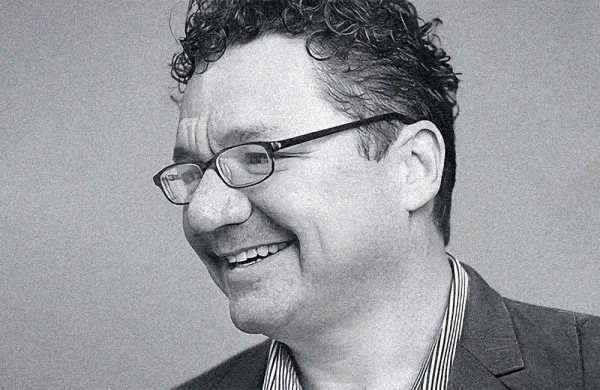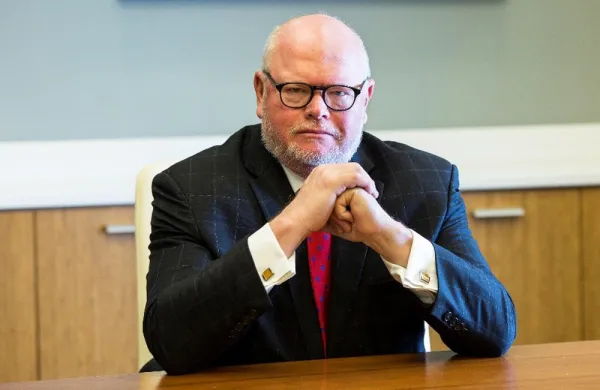Institutional Investor is pleased to announce the finalists for the first annual Allocators’ Choice Awards.
Finalists were chosen based on nominations submitted over the summer and vetted by Institutional Investor’s editorial team. Starting this week, asset allocators will cast ballots for the ultimate winners, to be crowned on November 28, 2017, at dinner in New York City.
The inaugural awards dinner will follow the Masterclass — an afternoon of discussion among an exclusive group of asset allocators and managers, where attendees will share, debate, and tackle institutional investing’s intractable problems.
Peer voting will occur in partnership with IIN, Institutional Investor’s private network for asset owners.
Allocators, request an invitation now to the Masterclass and dinner.
The Finalists
PARTNERSHIP OF THE YEAR
Caisse de dépôt et placement du Québec & GE (Michael Sabia, President/CEO)
Caisse de dépôt and GE joined forces this year when the pension fund and industrial company partnered to create a $2 billion aircraft financing platform via GE Capital Aviation Services. It wasn’t the first time in 2017 that the two giants worked together: Just months before, Caisse acquired GE Water alongside water optimization and waste recovery firm SUEZ.
California State Teacher’ Retirement System & State Street Global Advisors (Chris Ailman, CIO)
Last year, CalSTRS provided a $250 million seed for SSGA’s SHE index – an ETF tracking companies with gender-diverse management teams. One year later, the pension fund and asset manager have taken their diversity initiative one step further, using their combined firepower to pressure public companies into putting more women on boards.
Hartford HealthCare & Neuberger Berman (David Holmgren, CIO)
CIO David Holmgren and his team pride themselves on their close connections with fund managers, and the fund’s relationship with Neuberger Berman is no exception. From Hartford Healthcare’s first-ever private equity commitment to a Neuberger secondaries fund in 2013, to seeding an untested “consumer brand-licensing” strategy in more recent years, to co-sponsoring gatherings of investment professionals, the two organizations have built a lasting strategic partnership.
New Jersey Division of Investment & BlackRock (Chris McDonough, Director/CIO)
New Jersey partnered with BlackRock on “the Fund Alignment and Incentive Reform (FAIR) program, with a commitment of $1 billion” focused on “risk mitigation strategies.” Targeting an average “1% management fee and 10% incentive fee, with hurdles,” the fee model checks in well below standard fund terms.
New Jersey Division of Investment & Owl Rock (Chris McDonough, Director/CIO)
Ask about business development companies and institutional investors — or strategic partnerships at all — and everyone will tell you to talk to New Jersey. The massive public fund is renowned for getting fee deals from top-notch managers that others lust after. Often, it’s because they invest in managers when they need it, as with Owl Rock. Thanks to a seed investment in this burgeoning BDC, NJ’s pensioners have a stake in the firm’s revenue as it grows. And “Owl Rock is rock-solid — one of the best,” says a BDC expert.
Teacher Retirement System of Texas & Albourne Partners (Jerry Albright, CIO; Britt Harris, former CIO)
The hedge fund industry held its collective breath when Albourne and Texas Teachers released its “hugely innovative ‘1 or 30’ fee structure proposition” — a model that would allow Texas to retain 70% of alpha share from its hedge funds. The result: almost all of Teachers’ hedge fund partners accepted the terms, “ensuring that unlike many public pension plans, the majority of benefits from hedge fund investments end up in the allocators’ hands.”
Texas Tech University & Corrum Capital Management (Tim Barrett, Associate Vice Chancellor/CIO)
Texas Tech, “in addition to some great hires,” has established a “trade finance platform with Charlotte-based Corrum Capital,” the result of “Tim Barrett reaching out to them and wanting to be in trade finance — an area with low-default rates, high recovery rates, and banks moving out of the space.” Texas Tech “seeded a fund with them — named the Alternative Income Fund — and Corrum have gone out and built a global platform to deploy TTU capital.” Two years in the making, the fund is providing “very solid, now low-double digits returns.”
TURNAROUND OF THE YEAR
American Red Cross (Greg Williamson, CIO)
As one nominee put it, “Greg has almost single-handedly transformed the American Red Cross to function like a modern asset manager rather than a sleepy foundation.” He rebuilt the back office, risk management systems, and investment team by “working seven days a week” and hiring strong talent, such as Jane Western (formerly Boeing’s longtime operations head) and Carol Anne Lindsey (an alum of George Washington University’s endowment).
Delta Air Lines (Jonathan Glidden, Managing Director, Pensions)
Shortly after Jon Glidden joined Delta’s defined benefit plan in 2011, percent-funded status dipped into the 30s. In-house staff dropped from 25 to 7, and Glidden came up with an entirely new plan for the fund’s recovery: A three-pronged outsourcing arrangement, with the small internal team — led by Glidden and Amanda Cogar, his deputy — supported by an asset manager partner and independent consultant. Overtop all that is a portable alpha strategy that’s delivered un-corporate-like returns, and the backing of Delta’s CFO. The OCIO model has evolved since then, and so has the funded status: 49 percent at last check, and on track to 80 percent by 2020.
New York City Retirement Systems (Scott Evans, CIO/Deputy Comptroller for Asset Management)
In the three years of CIO Scott Evans’ tenure, New York City’s Bureau of Asset Management has cleaned up its “embarrassingly abominable” office space, hiked up the compensation for its underpaid staff, simplified its governance structure, and filled in gaps in the investment team with new hires. Though Evans could soon be on his way out – the pension system’s CIOs typically serve the same term as the city comptroller – he’s built a lasting foundation for managing New York City’s pensions.
OPTrust (James Davis, CIO)
“What used to be a very conservative and plain-vanilla plan, James Davis is building into a new Ontario Teachers’.” OPTrust’s CIO came over from “the Mothership” — Ontario Teachers’ Pension Plan — in September 2015, where he’d been chief economist. Since then, the fund has been busy “implementing a completely new asset allocation, expanding the team, and bringing some trading in-house.” Welcome to the big leagues of Canadian Giants.
Texas Municipal Retirement System (TJ Carlson, CIO)
Despite “fewer resources and more governance challenges” than its peers, TMRS under TJ Carlson has seen a “wholesale shift in asset allocation,” going from “essentially core fixed income and public stocks to being globally diversified across all asset classes.” In the “few short years” Carlson has been working at TMRS, the investment team “has grown from 4 to 17, and has built out external manager relationships from 14 to nearly 100, the result of 4,000 hours’ worth of manager meetings.” And, according to one nominator, “this wasn’t simply replicating an ‘endowment lite’ approach to asset allocation, but rather a thoughtful construction exercise combining mean-variance optimization, risk budgeting, and liability-aware investing.”
TECHNOLOGY USER OF THE YEAR
GIC (Jeffrey Jaensubhakij, CIO)
GIC’s job postings say it all: Sr. Quantitative Engineer, Data Scientist, Cloud Engineer, Distributed Computer Engineer, and so on. The Singaporean sovereign fund is “maybe the only institution doing in-house quant, machine learning, etc. — and they’re very serious about it.” Recent hires suggest so: GIC’s first Chief Technology Officer Wu Choy Peng started in August, as did a new board member, veteran technology investor Koh Boon Hwee, HP’s former MD for Singapore.
Northwestern University (William McLean, VP and CIO)
Northwestern’s $10 billion endowment was “an early adopter” of Solovis, an off-the-shelf portfolio and risk management system specifically for institutions, family offices, and outsourced-CIOs. The platform has taken off with some top nonprofits, and Northwestern has a cut of the business: It “saw an opportunity” and made “valuable, direct” VC investments in the Dallas-based start-up.
State of Wisconsin Investment Board (David Villa, CIO)
For the completion of a “three-and-a-half year, $48 million technology overhaul” with the help of project consultant Citisoft, an undertaking “involving eight new technology solutions to deploy daily investment book of record data supporting the long-term needs of the investment management group” — and which required “replacing the entire technology infrastructure.” The enterprise, according to Citisoft, is “one of the most transformative projects by either a public or private pension fund.”
CHANGE MAKER OF THE YEAR
Contra Costa County Employees’ Retirement Association (Timothy Price, CIO)
The “functionally focused portfolio” — brought in by CIO Tim Price and his deputy – is essentially liability-driven investing (LDI) for a public-pension fund. A pension fund does three things, according to CCCERA: It pays current benefits, grows assets for future benefit payments, and weathers markets to ensure the delivery of the first two. For each function — liquidity, growth, and hedging — the investment team modeled a dedicated portfolio, so the assets overall no longer needed to serve three functional masters. With the input of CCERA’s new consultant Verus and execution by LDI-specialist Insight Investments, they did something that’s never been done before.
Employees’ Retirement Fund of the City of Dallas (Cheryl Alston, Executive Director)
In 2016, Executive Director Cheryl Alston and her team undertook an actuarial review, and found a longevity problem. She and the board sprung into action, built a package of benefit changes to save $2 billion over 20 years, got unanimous buy-in from the City politicos, and finally majority voter support to pass it. Dallas ERS is 80 percent funded, and on an upward path. The road not taken looks like neighboring pension Dallas Police and Fire — “Yikes!”
Teacher Retirement System of Texas (Jerry Albright, CIO; Britt Harris, former CIO)
“If 1 or 30 works for Texas — and, perhaps, to a large degree for the underlying hedge funds — it’s a game changer,” noted one nominee. Although the move to change fee structures was “met with some hesitation” by the industry (many a hedge fund asked Institutional Investor who was saying yes to the new fees, and who was being fired for saying no), the initial reaction has been largely positive. “While the results of Texas’ test won’t be known until we go through a full cycle,” it is “hard not to argue that TRS, if successful, will change the way hedge funds get paid.”
World Bank Investment Management Division (Heung-Sik Choo, Director)
The World Bank’s investment team is not only running its own $22 billion in retirement funds, but also dispatching its members all over the world to teach central banks and sovereign wealth funds asset management best practices. “There was a ton of demand” for these allocators-slash-consultants, who count it as one of “the most meaningful parts” of their jobs (and thus, tend to stick around).
TEAM OF THE YEAR
Ascension Investment Management (David Erickson, CIO)
CIO David Erickson “is a true leader who believes in team collaboration and runs the entire portfolio” — which includes $4 billion in outside capital — “using an ESG screen.” The team “has spent a lot of time examining their own processes.” Risk management has been of particular focus thanks to Erickson and Senior Director Michael Griswold, who “is instrumental implementing these strategies.” Other “key team members” include asset class heads Maurice Perry, Dale Hunt, Josh Kaplan, and Michael LeVar.
Margaret A. Cargill Philanthropies (Shawn Wischmeier, CIO)
“Not long ago, they started with nothing,” as only after Margaret Cargill’s 2006 death was the charity funded with approximately $7 billion. Yet “Shawn Wischmeier, who joined in 2012, quickly put the money to work.” The former public fund CIO “has methodically brought together a top-level staff in Minneapolis, including the well-respected and perfectly-named Rodney Overcash” — not always an easy task, given the geography — “and created an environment where people are excited to put money to work.”
Massachusetts Pension Reserves Investment Management Board (Michael Trotsky, Executive Director/CIO)
Executive director and CIO Michael Trotsky has had to fight hard against the “brain drain” facing public funds – his initial hiring came after pay concerns prompted his predecessor’s exit, and several investing staff positions remained vacant over the early part of his tenure. Today, however, the pension fund boasts a strong team with talented investors like Deputy CIO Sarah Samuels and Chief Strategy Officer Eric Nierenberg.
State of Wisconsin Investment Board (David Villa, CIO)
A “home to top talent in American public fund investing,” the State of Wisconsin Investment Board “comes closer to Canadian and Nordic funds in their portfolios than almost any other major American fund, largely on the back of David Villa and the talent he has brought in-house.” Multiple nominators mentioned Dominic Garcia, the fund of funds manager and “point man on many external relationships,” as a “key member of the team.”
Texas Tech University (Tim Barrett, Associate Vice Chancellor/CIO)
CIO Tim Barrett has recruited “true rising rock stars on a quasi-public salary.” A prime example: Last year’s addition of deputy CIOs Dan Parker and Robert Lee III. As one peer puts it, “he’s created a place where talent wants to be.”
University of California Board of Regents (Jagdeep Bachher, CIO)
Since joining the UC Regents in 2014, CIO Jagdeep Bachher has built a top-tier investment team, bringing along AIMCo alumni like UC’s chief operating officer Arthur Guimaraes and hiring ex-CIOs like equities head Scott Chan. Most recently, the UC team gained another all-star in the form of Eduard van Gelderen, former CEO of Dutch pension giant APG.
UPS Group Trust (Brian Pellegrino, CIO)
The UPS Pension Trust under Brian Pellegrino has “consistently fresh talent,” grown into “sophisticated allocators.” Its “alumni record is as strong as it gets,” with former employees “spreading out far beyond the corporate pension fund world.” Ex-employees now hold “senior-level positions” at places such as the University of North Carolina endowment and the Johnson & Johnson pension.
INVESTMENT COMMITTEE/BOARD OF THE YEAR
Employees’ Retirement System of the State of Hawaii (Emmit Kane, Chair; Director of Labor Relations and Organizational Development & Training, Hawaiian Telcom)
The Hawaii investment committee has “supported the investment office over the years,” but “also managed, in a single year, to move the actuarial assumed return from 7.55% to 7.05%” while “managing the political conflicts that came with the state legislature committing to increased employer contributions.” Painfully but responsibly, the trustees also “incorporated new longevity assumptions that increased the unfunded liability by $1.2 billion.”
Hartford HealthCare (Laura Estes, Chair; Former SVP, Pensions, Aetna Life and Annuity Company)
Hartford Healthcare’s CIO-packed investment committee is a “key factor” behind the fund’s consistently high returns. Made up of industry practioners like Aetna CIO Jean LaTorre and Eversource Utilities’s investment chief Bob DeAngelo, the committee “always has the insider’s perspective” and remains committed to the “big picture.” Though they may challenge CIO David Holmgren and his team “like only other CIOs could,” the “absolutely brilliant” group is also “collaborative and supportive.”
Mercy Health (Cheryl Alston, Chair; Executive Director, Employees’ Retirement Fund of the City of Dallas)
Chaired by Cheryl Alston, director of the Dallas public employees’ pension fund, Mercy Health’s investment committee is a “guiding force” for the healthcare fund, “collaboratively engaging with the investment team to pioneer new investment policies” like de-emphasizing return targets in favor of targeting volatility. The committee’s sponsorship of a risk-based approach resulted in a 3.0 Sharpe ratio for the last fiscal year – and the group continues to show “effective executive leadership” in handling the global geopolitical events now unfolding.
Oregon Investment Council (Rukaiyah Adams, Chair; CIO, Meyer Memorial Trust)
The state investment council is renowned for making “forward thinking” and proactive decisions. “They just approved the hiring of another 27 staff members,” according to a nominator, “because they’re always out to save on fees. With the portfolio “approaching $100 billion,” the high-performing organization also lowered its assumed rate of return. “And there are plenty of people who say Oregon was the first pension to invest in private equity.”
Rutgers University (Tilak Lal, Chair; Managing Director/Chief Risk Officer, K2 Advisors)
Following a surge in assets past the $1 billion mark, the university’s investment committee “identified a need, as well as the immense potential benefits of forming an in-house investment capability” for the “maturing pool of capital” and took the steps toward hiring an “under the radar, but highly respected” director of investments in Jason MacDonald.
CHIEF INVESTMENT OFFICER OF THE YEAR
Mark Baumgartner, CIO (Institute for Advanced Study)
Baumgartner has “taken a portfolio that was pretty normal” and “made it revolutionary, by the standards of the day.” This comes via an “amped up focus on alpha,” in his own words, and a move toward “more illiquid, less directional” investments. He does it all with “a small, but sharp” team that “feels comfortable taking intelligent risks with a select group of external managers.”
Jeanmarie Grisi, CIO (Nokia, formerly Alcatel-Lucent)
“Jean has had a heck of a year or two” with the merger of Alcatel-Lucent and Nokia, which began combined operations in January 2016. She is leading the charge of “harmonizing myriad retirement funds” across the world, “gaining their trust” and plenty of frequent flier miles along the way.
Jim Grossman, CIO (Pennsylvania Public School Employees’ Retirement System)
A “trailblazer among publics” who created a “cutting edge portfolio” with “consistently strong returns,” Grossman is lauded as an “exceptional fee negotiator” and “strategic partnership builder that gets hugely additive concessions from top managers.” Any “list without Grossman is incomplete,” said one nominator.
Jason Klein, SVP and CIO (Memorial Sloan Kettering Cancer Center)
“Smart,” savvy, thoughtful, generous — “Jason is the kind of guy who will literally give you the watch off his wrist.” Klein is among the most-liked figures in the burgeoning health care investment scene, and leads the young community with grace and vigor. “This guy is as good as the institution he’s investing for.”
Kathleen Lutito, President and CIO (CenturyLink Investment Management)
This spring, Lutito’s tenure at CenturyLink (and predecessor Qwest Asset Management) crossed the two-decade mark. Her leadership style combines “quantitative rigor” with “extreme likeability” — making her a much-loved member of the corporate pension world. “The job has evolved, and so has Kathy. But what’s remained steady throughout is her focus on developing talent,” which isn’t always an easy task in the twilight era of U.S. corporate defined benefit plans.
Ana Marshall, VP and CIO (William and Flora Hewlett Foundation)
Marshall has “THE best track record in the large foundation space,” and has developed a deep bench of talent behind her at the Hewlett Foundation. She’s widely respected in Silicon Valley — and perhaps “a tiny bit feared” by the big-league endowments, which Hewlett is said to routinely beat. On top of all this, she’s an investment community leader and warm personality.
Donald Pierce, CIO (San Bernardino County Employees’ Retirement Association)
“Small fund, but intensively smart” writes one nominator. This is “much credit to Don Pierce,” who has “led the pension down an innovative path.” One example provided by a nominator: a “unique arrangement with Zais to create a risk retention partnership for the purpose of holding risk retention-compliant CLO assets — something well ahead of the market.”
Timothy Price, CIO (Contra Costa County Employees’ Retirement Association)
Timothy Price brought his “consultant’s background, acumen, and a colleague” to CCCERA, a now $8 billion public fund in the San Francisco suburbs. He had ideas about how to radically change DB fund investing — and pulled them off. Price, at a young age, shows “a capacity for board relations” and out-of-box thinking beyond his years. The “functionally focused portfolio” is essentially liability-driven investing, for a space that’s never done it before.







